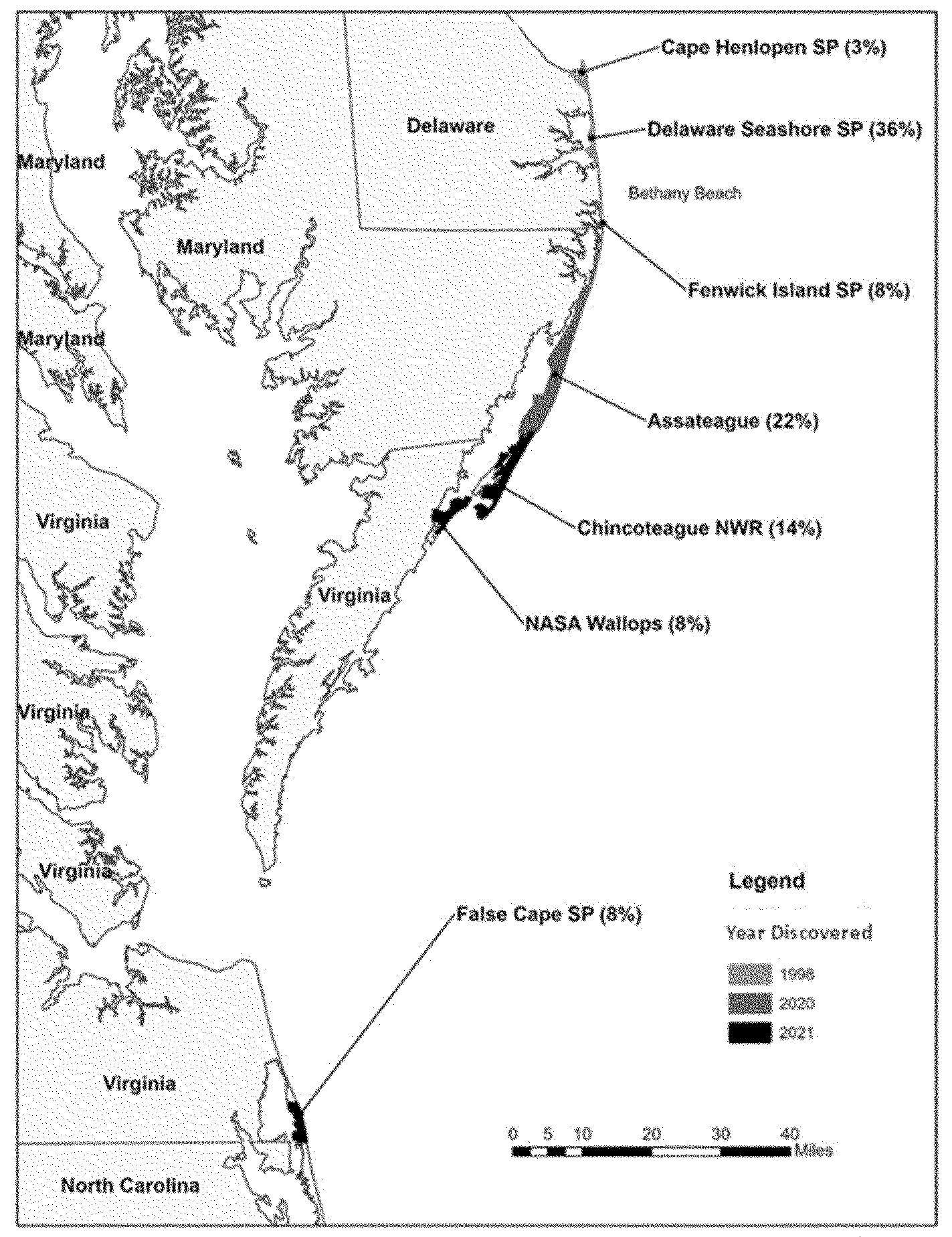On September 30, 2024, the U.S. Fish and Wildlife Service (USFWS) announced intention to list the Bethany Beach firefly (Photuris bethaniensis) as an endangered species, a first for fireflies. The insect’s range extends from Delaware through Maryland and into Virginia’s Eastern Shore. It is currently considered endangered under Delaware state regulations; Maryland and Virginia recognize the Bethany Beach firefly as Critically Imperiled at a global level and at the state level. The listing could have implications for Wetland Studies and Solutions, Inc. (WSSI) clients with projects in Delmarva Peninsula region. The public comment period is open until December 2, 2024.
How Might This Action Impact My Projects?
- Protection of the Bethany Beach firefly under the Endangered Species Act could change aspects of development activities proximal to known habitat or populations. Potential restrictions might include measures to safeguard against intentional or incidental “take¹,” such as:
- Limits on drilling that could affect groundwater hydrology in the vicinity of the fireflies’ habitat.
- Time-of-year restrictions in summer months on the use of artificial light sources during project development.
- Limitations on the use of permanent light sources.
- Designation of critical habitat where development is prohibited to protect the species.
Species Description
These black-headed beetles rarely exceed 0.5 inch in length, emit a unique green light, and are noticeable well after sunset. First discovered in 1949, this species inhabits only low-lying freshwater swales. Swales are threatened by several factors, including increased salinity due to sea level rise; coastal development; and invasive plant species which can alter the swale ecology. Light pollution from coastal development also can confuse the fireflies, resulting in lower success during mating season.
As a result of this habitat degradation, only 15 populations of the Bethany Beach firefly remain in scattered areas along the Delaware, Maryland, and Virginia coasts. Most of the remaining populations can be found on Assateague and Chincoteague islands.
Interested in making a public comment?
The USFWS will consider comments received or postmarked on or before December 2, 2024 and may issue further guidance in 2025.
Comment online
- Visit https://www.regulations.gov.
- Use the search tool to find FWS–R5–ES–2024–0080
- In the panel on the left side of the screen, under the Document Type heading, check the Proposed Rule box to locate this document
- Use the ‘‘Comment’’ button to complete the process.
Comment by mail
Public Comments Processing
Attn: FWS–R5–ES–2024–0080
U.S. Fish and Wildlife Service
MS: PRB/3W, 5275, Leesburg Pike
Falls Church, VA 22041-3803
¹ “Take” is defined in the Endangered Species Act as “to harass, harm, pursue, hunt, shoot, wound, kill, trap, capture, or collect, or to attempt to engage in any such conduct.”


